Hops in Beer Brewing: Elsaesser
Published: November 10, 2025 at 9:28:49 PM UTC
This guide introduces Elsaesser hops, a rare European noble hop variety grown in Alsace. It draws interest from craft brewers and homebrewers across the United States. The article aims to be a comprehensive reference on Elsaesser hops, covering their origin, chemistry, agronomy, brewing uses, storage, and sourcing.
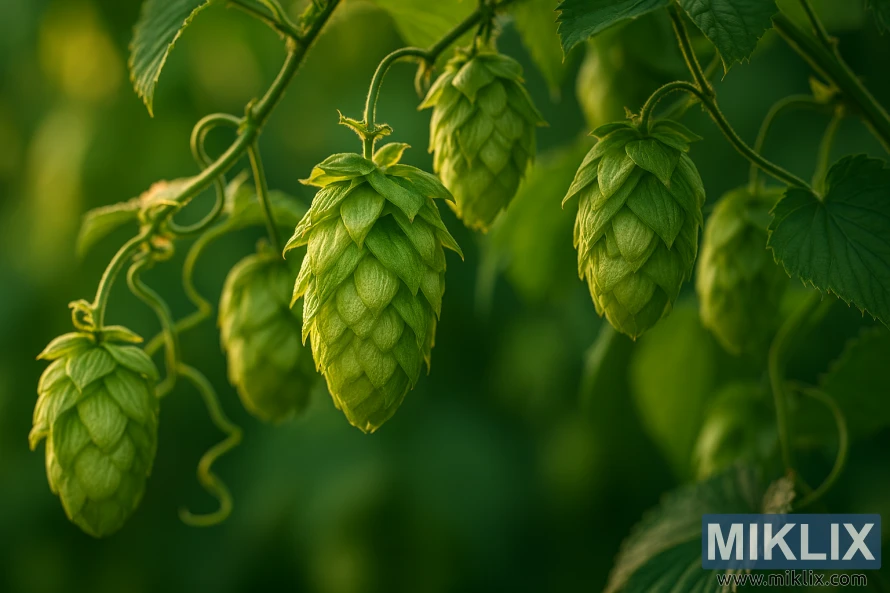
Elsaesser hops are highly valued for their aroma, not bittering. They have historical ties to old land-race cultivars in the Alsace region. These hops are grown in limited acreage and small commercial runs. Brewers use them to add a refined, noble-like character to lagers, pilsners, and subtle pale ales.
Technical metrics for Elsaesser hops show alpha acids near 4.65%. Beta acids range from 4.65–5.78%, and co-humulone is between 20–30%. Total oil content is about 0.28 to 1.13 mL/100g, often cited near 0.57–0.63 mL/100g. These figures help brewers plan hopping rates when using Elsaesser in recipes.
This article will guide readers on how to work with Elsaesser hops in beer brewing. It covers sensory expectations, lab data, cultivation notes, storage tips, and simple recipe ideas. These highlight the hop’s delicate profile.
Key Takeaways
- Elsaesser hops are a rare Alsace-grown variety valued for aroma more than bittering.
- Typical alpha acids are low (~4.65%), with moderate beta acids and modest total oils.
- They fit well in European-style lagers, pilsners, and subtle pale ales where noble character is desired.
- Limited acreage means careful sourcing and small-batch planning for brewers in the U.S.
- The article will cover origin, chemical profile, agronomy, storage, and practical recipes.
Introduction to Elsaesser hops
Elsaesser is an aroma hop known for its subtle floral and spicy notes. It is a delicate, noble-style variety, rarely found in large quantities. This makes it a unique addition to brewing.
The Elsaesser aroma hop is best used for late kettle additions, whirlpool, and dry hopping. It's treated as an accent hop, not a primary bittering source. This approach helps preserve its nuanced profile.
Historical records and regional accounts suggest Elsaesser's origins in old Alsace land races. It's believed to have ties to hops grown near imperial gardens in the early medieval period. These gardens were associated with Pepin the Younger and Charlemagne’s estate gardens.
Elsaesser is classified among noble European hops, alongside Hallertau, Saaz, and Tettnang. It has low-to-moderate alpha acids and a refined aroma profile. This makes it perfect for classic lagers and lighter ales that emphasize aromatic finesse.
To use Elsaesser effectively, add it late in the boil or during conditioning. This captures its delicate aromatics. Use modest rates during dry hopping to avoid overpowering the beer. This allows its noble European hops character to emerge in subtle layers.
Origin and geographic significance
The Elsaesser origin is rooted in a small, commercially valuable area within the Alsace region of France. Growers in this region carefully cultivate the variety, ensuring its rarity and unique market appeal. This dedication to quality and exclusivity gives Alsace hops a distinct regional identity.
Genetic studies and field reports indicate that Elsaesser has its roots in a local land race from Alsace. This background positions it among French hop varieties that have evolved under traditional practices and local selection. Unlike modern breeding programs, Elsaesser's development is deeply rooted in regional traditions.
Historical records reveal that the area has been associated with hop cultivation for centuries. Medieval accounts and garden records from the region underscore the long-standing presence of hops in Alsace agriculture. This historical context places Elsaesser alongside other historic European hops, highlighting its cultural significance.
The limited production scale significantly influences availability and pricing. Brewers looking for Elsaesser may encounter a scarcity of supply and higher costs. This is due to the small acreage and focused demand for authentic Alsace hops.
The terroir of Alsace plays a crucial role in shaping the aroma and flavor of Elsaesser. The cool, continental climate and loess-clay soils contribute to its noble aroma character. This connection to the place of origin underscores the unique sensory profile of Elsaesser hops.
- Commercial range: confined to Alsace vineyards and hop plots
- Genetic status: likely an old local land race
- Historic context: part of medieval and regional hop traditions
- Market impact: limited availability, potential premium pricing
Aroma and flavor profile of Elsaesser
The Elsaesser aroma profile is a classic European noble hop aroma. It offers subtle floral notes and a gentle spice in the background. Brewers note herbal touches that complement malt without overpowering it.
The flavor of Elsaesser hops is about restraint, not bold fruitiness. Expect delicate bread crust and light pepper, along with mild floral tones. If you're looking for tropical or citrus notes, Elsaesser is not for you.
Alsace hop flavor shines in clean, traditional lagers and pilsners. It also suits Kölsch-style ales and many farmhouse or Belgian beers. These beers rely on refined hop perfume, not heavy fruity esters.
- Subtle floral and spicy elements
- Herbal and delicate noble character
- Balanced, restrained bitterness that highlights malt
This variety embodies old-world noble hop sensibilities. Used late in the boil or as a dry hop, the noble hop aroma is evident without dominating the beer. Elsaesser is ideal for those seeking elegance over boldness.
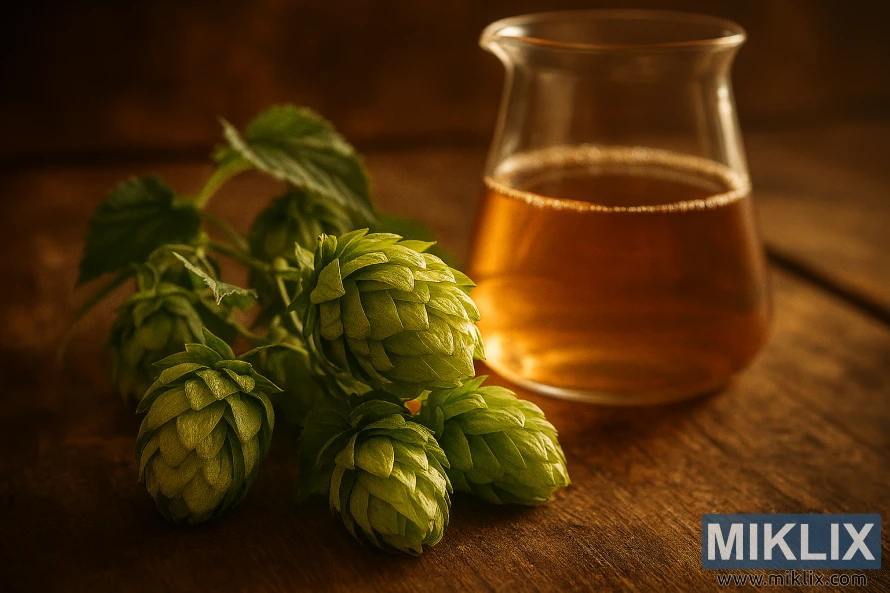
Chemical composition and alpha/beta acids
Elsaesser's hop chemical composition is a favorite among brewers who seek a subtle bitterness and a pronounced aroma. The alpha acids in Elsaesser are reported to be around 4.65%, a consistent figure across multiple lab records. This level provides modest bittering power when the wort is boiled early.
The values for Elsaesser beta acids vary by source. One dataset lists Elsaesser beta acids at 5.78%, while another pairs beta with alpha at 4.65%. Practical ranges for routine batches fall from the mid-4% to the high-5% bracket. Brewers should expect small shifts in bitterness potential depending on the harvest and analytical method.
Co-humulone Elsaesser appears in a moderate band versus classic noble varieties. Reports place co-humulone Elsaesser between 20% and 30%, with a precise figure commonly cited as 24.45%. This mid-range co-humulone content helps keep bitterness clean and predictable without harshness.
Practical brewing implications follow from these numbers. Moderate Elsaesser alpha acids mean the hop works best for late additions and dry hopping to lift aroma. Early kettle use will produce modest, reliable bitterness, useful when a brewer wants balance without dominance.
When planning recipes, track lab sheets for each lot so Elsaesser alpha acids and Elsaesser beta acids are clear. Small adjustments to boil time or hop weight give control over perceived bitterness and aroma intensity. This lets brewers use Elsaesser for aromatic nuance while keeping the beer balanced.
Essential oils and their brewing impact
Elsaesser essential oils have a moderate total oil content, typically around 0.57–0.63 mL per 100 g of cones. The range varies from 0.28 to 1.13 mL/100 g. This gives brewers a consistent aromatic base for late additions and dry hopping.
The hop oil composition is dominated by myrcene, making up about 38% of the total. Myrcene contributes resinous, herbal, and fresh green notes, creating a vivid hop character. Brewers must handle these hops with care, as myrcene oxidizes faster than other components.
Humulene accounts for 29%–32% of the hop oil composition, adding woody, spicy, and noble herbal tones. This balance helps Elsaesser deliver classic European noble traits. It provides subtle spice and structure without overpowering the malt bill.
Caryophyllene is present at 11.6%–12%, adding peppery, spiced accents that enhance complexity in the aroma. Farnesene, at 1.7%, contributes delicate floral nuances that become noticeable in gentle dry-hop regimes.
- Late kettle additions preserve volatile myrcene notes for a fresher hop aroma.
- Dry hopping enhances humulene and caryophyllene expression, yielding herbal and spicy layers.
- Short, cool-conditioning and rapid packaging help retain the fragile myrcene-driven character.
Understanding the proportions of myrcene, humulene, caryophyllene, and farnesene allows brewers to predict how Elsaesser essential oils will evolve. With careful timing and storage, brewers can maximize the hop oil composition and preserve the intended aroma profile.
Agronomic characteristics and cultivation notes
Elsaesser cultivation exhibits a slower growth pace compared to contemporary varieties. Its plants grow with moderate vigor, necessitating trellis designs that accommodate their limited canopy size.
This hop variety matures early, aligning well with the tight schedules of Alsace and similar climates. Its early maturity aids growers in avoiding the risks associated with late-season weather.
The reported hop yield for Elsaesser is approximately 810 kg per hectare, or about 720 lbs per acre. Given its small acreage and lower vigor, operators should anticipate modest returns per hectare.
In hop agronomy, disease resistance is a critical factor in management. Elsaesser exhibits moderate resistance to downy mildew, which can reduce the need for sprays. However, incomplete data on other susceptibilities necessitates vigilant monitoring.
- Planting: match rootstock and soil to local pH and drainage for best establishment.
- Irrigation: provide steady moisture during early shoot growth and cone fill.
- Training: use closer spacing or selective twining to maximize light in a compact canopy.
- Pest and disease checks: prioritize mildew scouting and rapid response to signs of stress.
Alsace hop farming benefits from aligning variety traits with microclimate. Growers valuing early harvest windows and moderate mildew resilience may find Elsaesser cultivation suitable for niche operations.
Field trials and meticulous record keeping are essential for refining expectations for hop yield Elsaesser across different sites. Implementing good hop agronomy practices helps stabilize output when working with varieties of lower vigor.
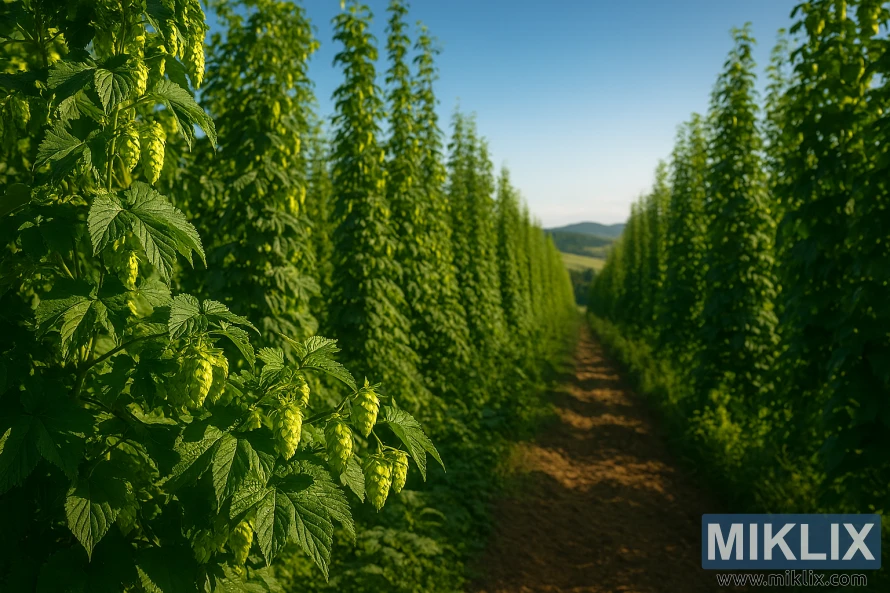
Harvesting and cone properties
Growers find hand-picking and small-scale combine work with Elsaesser to be straightforward. Due to limited acreage, most operations handle the delicate hop cones with care. This approach helps preserve their integrity.
Details on Elsaesser cone size and hop cone density are hard to come by. An industry sheet left these fields blank, forcing brewers to rely on grower notes and visual checks. This is for making decisions on packing and dosing.
When planning the harvest, aim for the typical European noble hop cone maturity. Picking at the right time ensures the preservation of aroma oils. This maintains the fresh hop character that brewers aim for with Elsaesser.
- Visual cues: cones feel dry, lupulin is bright yellow and aromatic.
- Handling: use light agitation to avoid bruising and loss of essential oils.
- Packing: minimize compression to retain cone structure and measured hop cone density.
For brewers measuring yields, record both wet and dry weights. Also, note any variation in Elsaesser cone size across fields. These simple metrics help align raw hops with recipe targets.
Practical advice: align harvest timing with your malt and yeast schedule. This ensures aroma-forward batches get the freshest cones. Small-batch harvests allow for better control over hop cone properties and consistency in the finished beer.
Storage, stability, and shelf life
For both homebrewers and commercial brewers, proper storage of Elsaesser is crucial. This hop variety has fair to good storability. However, it does not match the longevity of modern high-alpha hops. Therefore, how you handle them is key.
Alpha acid retention in Elsaesser typically ranges from 60% to 63% after six months at 20°C (68°F). This decline impacts the hop's bittering potential. Brewers aiming for consistent IBU levels should adjust their hop weights or testing schedules accordingly.
The shelf life of hops depends on several factors, including temperature, oxygen exposure, and packaging. Vacuum-sealed or CO2-flushed bags can slow down oxidation. Freezing, on the other hand, halts most degradation and preserves delicate oils longer than refrigerated storage.
- Store cold when possible to preserve oils and alpha acids.
- Use sealed, low-oxygen packaging for best hop shelf life.
- Limit time at room temperature; plan recipes around fresh inventory.
For recipes that emphasize aroma, use fresher cones or pellets. Oil loss at ambient conditions reduces floral and spicy notes. If long-term storage is necessary, keep hops frozen and monitor alpha acid retention Elsaesser with periodic lab or tin-checks.
Practical packing and rotation are essential to maintain performance. Label batches with harvest and packing dates. Rotate stock so older hops get used first. These steps enhance hop storability and help brewers achieve both bittering and aroma goals.
Brewing uses and typical purposes
Elsaesser is highly valued for its aroma. It excels when added late in the kettle, used in whirlpool steeping, or as a dry hop. These techniques enhance its noble, floral notes, making it perfect for adding delicate top notes to your brew.
However, Elsaesser is not ideal for bittering. Its moderate alpha acids contribute a light, rounded bitterness. Yet, brewers often opt for other hops for the primary bittering role. Instead, use Elsaesser to balance your beer, not to provide the backbone.
Proper hop handling is crucial. Elsaesser contains significant amounts of myrcene and humulene, which can degrade with heat and rough handling. To preserve its aroma, employ low-temperature whirlpooling, short boil times for late additions, and gentle transfers during dry hopping.
Blending can also enhance Elsaesser's profile. Pair it with neutral malts and continental yeast strains like lager or Kölsch to highlight its subtle herbal and floral notes. Mixing it with other noble hops can create a complex flavor profile without overpowering it.
- Late kettle: brightens floral top notes and reduces harsh oils.
- Whirlpool/steep: preserves volatile aromatics and adds depth.
- Dry hopping: accentuates delicate herbal and honey tones.
To fully appreciate Elsaesser's unique character, employ these brewing techniques. Adhere to hop handling best practices and choose recipes that complement its subtle aroma. This approach will yield the best results when using Elsaesser in your brewing.
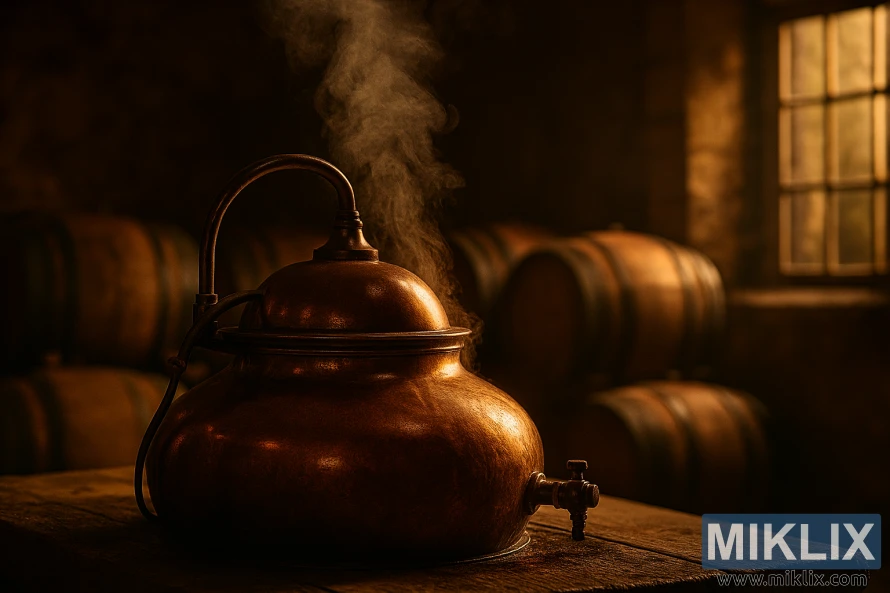
Recommended beer styles for Elsaesser
Elsaesser excels in classic continental lagers. It's perfect for Pilsner, German-style lagers, Vienna lager, and Kölsch. These beer styles Elsaesser complements enhance with soft herbal and spice notes. They do so without disrupting the malt balance.
Belgian ales and farmhouse beers benefit from a light Elsaesser touch. Paired with Saison or Belgian pale yeast, it adds a subtle noble character. This supports yeast complexity. Brewers aiming for the best beers with Elsaesser should keep hopping rates modest. This preserves yeast-driven esters.
Specialty and hybrid ales that seek old-world aromatic balance are ideal. Blonde ales, cream ales, and light European-style ales gain elegance from Elsaesser. These beers emphasize balance over aggressive bitterness.
Avoid pairing Elsaesser with modern, hop-forward IPAs or tropical, citrus-driven styles. These beers have pungent, fruity varieties that would mask Elsaesser’s noble profile. For this reason, Elsaesser in lagers remains the most consistent and rewarding use.
- Pilsner — crisp, floral finish; classic pairing for beer styles Elsaesser.
- Vienna lager — malt-forward with delicate noble spice.
- Kölsch — light body, subtle aromatic lift from Elsaesser.
- Saison and farmhouse ales — restrained use to enhance yeast character.
- Blonde and cream ales — low hopping for old-world balance.
Substitutes and similar hop varieties
Elsaesser substitutes are rare due to its unique regional pedigree and gentle herbal-floral character. No single hop perfectly matches it in modern catalogs. Brewers should view substitutions as approximations rather than exact swaps.
For practical brewing, consider traditional European noble varieties. Hallertauer Mittelfrüh, Spalt, Tettnang, and Saaz share herbal, floral, and mild spice notes. These work well when substitute hops for Elsaesser are needed.
Match alpha acids first. Aim for hops in the 3–5% alpha range to keep bitterness similar. Check humulene and myrcene levels to preserve the herbal and resinous aspects of the aroma.
- Use Hallertauer Mittelfrüh for rounded floral and sweet spice.
- Choose Spalt for soft herbal and earthy tones.
- Pick Tettnang to introduce light citrus and peppery spice.
- Opt for Saaz to reinforce delicate floral and noble spice.
Blending two noble hop alternatives can better approximate Elsaesser’s balance. For example, combine Saaz with Mittelfrüh to layer floral and sweet-spice elements. Adjust late additions and dry hops to tune aroma intensity.
- Compare lab numbers for alpha and oil composition before swapping hops.
- Scale back substitution rates slightly for strong varieties, then tweak in small test batches.
- Record sensory notes and adjust future brews to refine the match.
When sourcing, buy small amounts to trial blends. Treat substitute hops for Elsaesser as starting points, not final answers. Trial-and-error will yield the closest aroma and flavor profile for your recipe.
Practical recipe examples for brewers
Employ Elsaesser in late boil, whirlpool, and dry hop stages for its aromatic qualities. Begin with noble-hop levels and adjust according to batch size. Elsaesser usage rates typically range from 1–2 g per liter for aroma-centric beers. This equates to ounces per standard 5- or 10-gallon batches.
Ensure hops remain cold and sealed until application. Fresh Elsaesser maintains the myrcene and humulene balance, offering floral and slightly spicy notes. Avoid large late additions to prevent overstepping the noble profile.
- Pilsner (5% ABV): Employ a base grain mix of 60% Pilsner malt, 40% Vienna, and a hint of wheat for body. Use a neutral bittering hop early, followed by 20–30 g Elsaesser at 10 minutes. Add 30–40 g in a whirlpool at ~80°C, and 15–25 g for a 3–5 day dry hop. This approach refines the noble aroma without introducing aggressive citrus.
- Kölsch-style (4.8% ABV): Opt for a light malt bill and clean ale lager yeast. Incorporate 10–15 g Elsaesser at 5 minutes, 25 g in the whirlpool, and 20 g for dry hopping. This combination offers a subtle floral lift and a delicate finish, ideal for Kölsch clarity.
Adjust quantities based on batch volume and desired intensity. Match hop timing to achieve the desired aroma and bitterness. For a soft, traditional noble character, focus on whirlpool and brief dry hop contact over large late-boil additions.
For scaling recipes, multiply the grams per liter figure by your batch liters. Document each trial and note the sensory differences between whirlpool temperature and dry hop duration. Even small variations can significantly alter the aroma in lagers and ales.
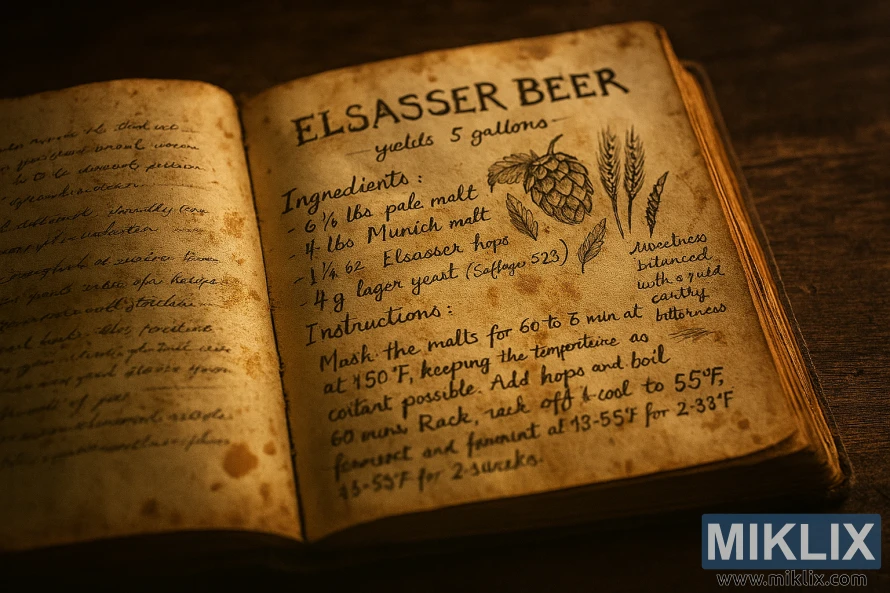
Where to buy Elsaesser hops and sourcing tips
Elsaesser hops are produced in small quantities in Alsace, France. This scarcity means that availability is intermittent and often in small lots. Expect longer lead times and higher prices compared to common hop varieties.
Begin your search with specialty hop merchants and boutique suppliers in Europe. Renowned distributors like BarthHaas and KALSEC offer rare European hops through specific channels. In the United States, focus on niche importers that handle unique noble and heritage hops for Elsaesser purchases.
When evaluating potential suppliers, ask for details on the hop's harvest year, alpha/beta acid content, and full oil lab data. Ensure they use vacuum-sealed, nitrogen-flushed, or frozen storage to preserve aroma. Opt for recent harvests and frozen hops for the best flavor in your brew.
Follow this checklist for successful Elsaesser sourcing:
- Request provenance confirming Alsace origin.
- Require lab certificates for alpha/beta and oil content.
- Verify packaging and cold-chain handling.
- Ask about available quantities and expected restock dates.
If unsure about performance, start with small trial quantities. Breweries new to Elsaesser often buy a single kilogram for pilot batches before larger orders.
Consider direct contact with growers or specialty brokers in Alsace for access to scarce harvests. Direct sourcing can provide early notice of availability and secure priority access from trusted suppliers.
Include higher shipping costs and customs timing in your procurement plan. Clear communication with suppliers about storage and delivery can mitigate risks. For those who source carefully, Elsaesser hops can add a unique regional character to limited-edition beers.
Comparative technical data and lab measurements
Consolidated Elsaesser technical data reveal alpha acids near 4.65% across multiple reports. Beta acids show more variation, ranging from 4.65% to 5.78%. Co-humulone is found in the 20%–30% range, with a precise record at 24.45%.
Total oil values range from 0.28–1.13 mL per 100 g. Many lab results cluster around 0.57–0.63 mL/100 g. This range aligns with an aroma-first hop, rather than a high-oil aroma variety.
Detailed hop lab measurements Elsaesser list myrcene at about 38% of total oil. Humulene makes up roughly 29%–32%. Caryophyllene sits near 11.6%–12%, while farnesene is low at about 1.7%.
These Elsaesser alpha beta oils and the terpene balance favor noble, herbal, and spicy notes. They do not favor citrus or tropical tones. Alpha and beta values indicate moderate bittering potential, making them suitable for finishing or late-addition aroma hops.
Storage data from lab tests indicate alpha retention around 60%–63% after six months at 20°C. This level shows moderate stability. Brewers seeking consistent hop lab measurements Elsaesser should prefer cold storage to preserve oil and acid profiles.
Small-scale production and limited datasets mean batch-to-batch variation can occur. Always request current lab certification for a specific harvest lot when precise Elsaesser technical data are required for a recipe or commercial brew.
Conclusion
Elsaesser conclusion: This hop, grown in Alsace, brings a noble European flavor with moderate alpha acids (around 4.65%) and essential oils rich in myrcene and humulene. It offers a herbal, floral, and gently spicy taste. This makes it a unique choice for brewers looking for a continental character without too much bitterness.
Summary Elsaesser hops points toward best practices: favor late additions, whirlpool, and dry hopping to preserve its delicate aromatics. It pairs naturally with pilsners, Kölsch, and other light continental styles where subtle noble traits can shine. Because storability is moderate, store cones or pellets cold and use fresh when possible.
Using Elsaesser in brewing requires planning for limited availability. If sourcing is difficult, traditional noble varieties such as Hallertauer Mittelfrüh, Spalt, Tettnang, or Saaz will approximate the character. Given the small acreage and variable lab data, trial small batches and request current analysis from suppliers to refine how Elsaesser performs in your recipes.
Further Reading
If you enjoyed this post, you may also like these suggestions:
